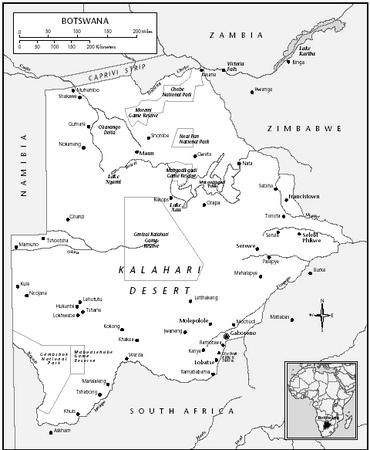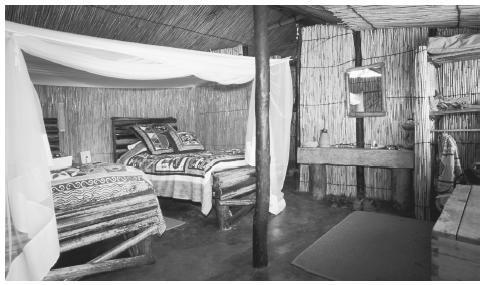Feijoada and Pão de Queijo
Our family is blessed to have some very close, special Brazilian friends and family in our lives who frequently treat us to wonderful home cooked, traditional meals. And, while the meal I prepared tonight couldn't begin to touch the quality of their cooking, I do hope that the love and respect we feel for them and their beautiful country is conveyed in spades. We love you, Ben, Juciene,Juliane, Danielle, Anna Julia and of course, my other son, Jon.
I love technology. This is how we arrived at this meal: Ian got on his Blackberry to survey his friends. Tim got on his iPhone to check with his friends, I went to the web and texted our friend Ben...After receiving input from numerous friends and sources, I was advised to try my hand at none other than the National Dish of Brazil, the hearty Feijoada stew and Pão de queijo, cheese rolls.
This recipe takes some time to cook, (about 30 minutes to prep and 3 hours to cook), and since I didn't know what the Hell I was doing, I started at around 3 p.m. to ensure that we'd be having dinner before midnight. No pressure, though!
Oh, look! John Hiatt just happened to stop in to see what I was cooking...You know, he's on tour right now and doesn't often get a good meal - what a lovely surprise...can you sing "My Old Friend" while I chop these onions? Thanks, you're a doll.
A little aside about this meal: a few readers have suggested I include more vegetarian dishes, which I think is a great idea . I truly appreciate the constructive criticism and feedback because one never knows who, if anyone, is actually reading the stuff I ruminate about! HOWEVER....Brazil is not the country to try to go vegetarian in ... Brunei is up next, and I intend to suppress my meatatrian tendencies as promised!

Brazil is the largest country in South America and borders every other South American country except Chile and Ecuador. From west to east it stretches nearly 2,700 miles from the Andean foothills eastward to the Atlantic Ocean. Its official name is the Federal Republic of Brazil, or, in Portuguese, the
Republica Federativa do Brasil. It occupies almost half the area of South America and is the world's fifth largest country. Although just slightly smaller than the United States in area, Brazil's population is about 40% less.
The national cooking style marked by profound differences. Depending on the section of the country, the food varies hugely in ingredients and influences. For example, in
Sao Paulo, the influence of European and North African immigrants is noticed in the region's cuisine. The majority arrived from Italy, along with many from Portugal and Spain, plus other Europeans and Arab countries. In the north, (
Acre, Amazonas, Amapá, Pará, Rondonia, Roraima, and Tocantins) the region is known as Amazonia as it includes a large part of the rain forest, and tributaries flowing into the Amazon River. Culturally, the Amazon basin is heavily populated by native Indians or people of mixed Indian and Portuguese ancestry who enjoy a diet of fish, root vegetables such as manioc, yams, and peanuts, plus palm or tropical fruits.
Some ingredients I've never cooked with before: Almidon de Yuca (tapioca starch), queso blanco fresco (white farmer's cheese)
Roasted smoked pork sausages, linguica, pork and slab bacon - serious amounts of meat!

Seasoning: scallions, garlic, onions and spices

The stew simmering away
Making the cheese rolls -yay!
Pão de queijo
The final product!!

Ingredients:
- 2 cups (1 pound) black beans, rinsed and picked over
- 3/4 pound pork butt or shoulder, trimmed of fat
- 6 ounces slab bacon
- 1/2 pound smoked pork sausages
- 1/2 pound hot Portuguese sausage such as linguica
- 1 or 2 pounds ham hock or shank, cut into 1-inch rounds
- 1 large yellow onion, chopped
- 2 to 4 ounces dried beef carne seca, minced (optional; see Note)
- .
- For the Seasonings:
- 3 garlic cloves, minced and sauteed in 1 tablespoon vegetable oil
- 6 green onions, including tops, chopped
- 1 yellow onion, chopped
- Large handful of chopped fresh parsley (about 1/2 cup)
- 2 bay leaves, crumbled
- 1-1/2 tablespoons dried oregano, crushed
- Salt and ground black pepper
- Chopped fresh cilantro or parsley
Preparation:
Soak the
black beans overnight in water to cover by several inches. Drain.
Place the drained
black beans in a saucepan and add water to cover by 3 inches. Bring to a boil, reduce the heat to low, cover, and simmer until the
beans are tender, 2 to 2-1/2 hours. Add additional water as needed to keep the
beans covered.
While the
black beans are cooking, prepare the meats. Preheat an oven to 375 degrees F. Dice the
porl butt kor shoulder and the bacon into 1/2-inch cubes. Place the
pork, whole
sausages, and
bacon in a large baking pan. Roast until well done. The
sausages will be ready after 35 to 40 minutes and the other meats after 45 to 60 minutes.
Cook the
ham hock at the same time as the meats are roasting. In a saucepan, combine the
ham hock rounds and onion with water to cover. Bring to a boil, reduce the heat to a simmer, and cook until tender, about 1 hour. Remove the
ham hock rounds from the water and remove the meat from the bones, if desired; set aside. Or leave the rounds intact for serving alongside the
black beans. Strain the cooking liquid into a bowl. Add the strained onions from the liquid to the
beans. Add the cooking liquid to the beans if needed to keep them immersed.
Once the
black beans are almost cooked, check to make sure there is plenty of cooking liquid in the pot. It should be rather soupy at this point. Stir in the
beef carne seca. Cut the
sausages into rounds and add them and all the other cooked meats to the pot. Then add all of the seasonings to the pot, including
salt and
pepper to taste. Simmer for another 30 minutes, or until the beans are very tender.
Taste and adjust the seasonings. Sprinkle with chopped
cilantro or parsley just before serving.
NOTE: Using dried
beef adds complexity to the richness of this dish, but its inclusion is optional. If dried
beef isn't available at your butcher, Armour makes a ground compressed dried beef sold in 2-1/2-ounce jars. Soak it in warm water to cover for 15 minutes to rinse off some of the salt.
Yield: 8 servings
Brazil is famous for its pão de queijo - cheese rolls with soft chewy centers. Pão de queijo is made with cassava flour (tapioca flour), the ground root of the manioc plant. They smell wonderful when they are baking, and plump up into perfect round balls. Many recipes call for parmesan, but if you can find
the Brazilian cheese queijo minas in your local Brazilian market, your pão de queijo will be even more authentic. Regular farmer's cheese or any other firm, fresh cows milk cheese work well in this recipe.
Prep Time: 15 minutes
Cook Time: 25 minutes
Total Time: 40 minutes
Ingredients:
- 2 cups whole milk
- 8 tablespoons butter, melted
- 1/2 cup vegetable oil
- 4 1/4 cups tapioca flour
- 4 eggs
- 2 cups grated farmer's cheese, or any firm, fresh cows milk cheese
- 1/4 cup grated cheddar cheese (optional)
- salt to taste
Preparation:
- Preheat the oven to 350 degrees.
- Mix milk, salt, vegetable oil and butter in a pot, and bring to a boil. As soon as it boils, remove from heat.
- Stir tapioca flour into the milk and butter mixture.
- Stir in the eggs and the cheese, and mix well.
- Let mixture cool for 15-30 minutes, so that it will be easier to handle. (I like to chill it in the refrigerator for 15 minutes or so).
- With floured (tapioca flour) hands, shape the dough into golf ball size balls (about 50 gram portions) and place them on a baking sheet.
- Bake rolls for 20 to 25 minutes, until they are puffed up and are golden. They will rise slowly and puff up mostly in the last 5 or 10 minutes.
- Serve warm.
Makes about 15 rolls
Final Assessment: This is very good, but very heavy food. The flavors are rich, and anything with black beans works for me. But we all agreed that a little goes a long way. The cheese rolls were great - also heavy, but totally addicting! Go for it if you have the time and want a delicious hearty meal!


















































